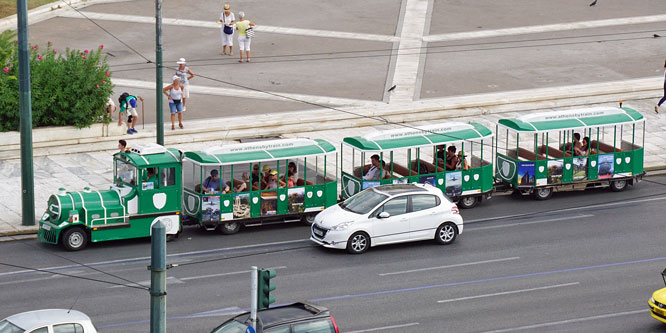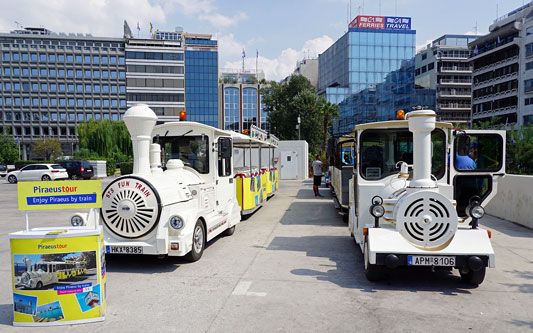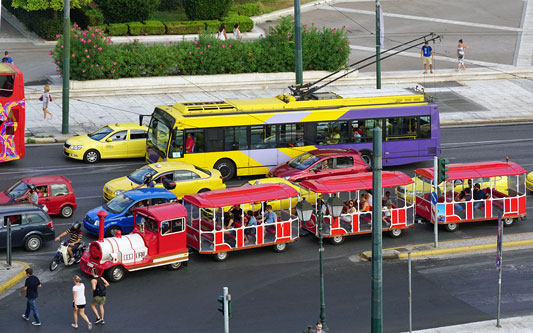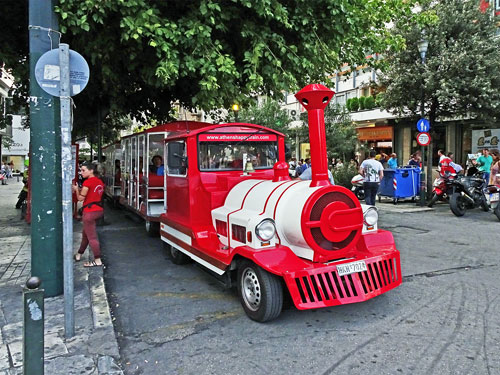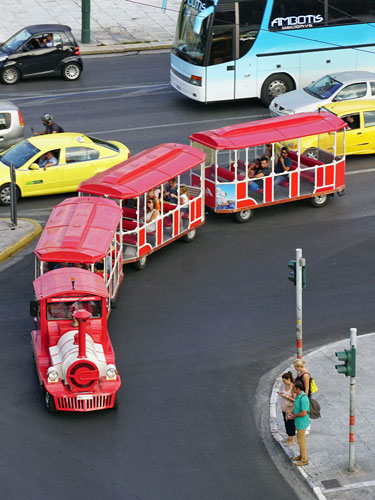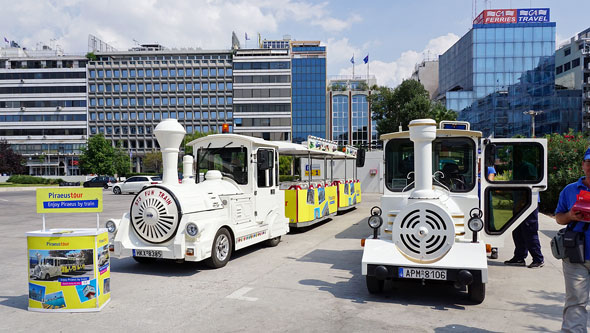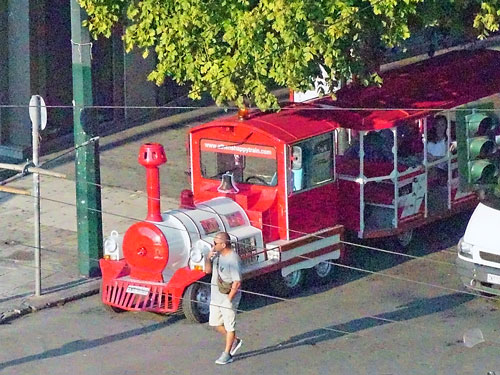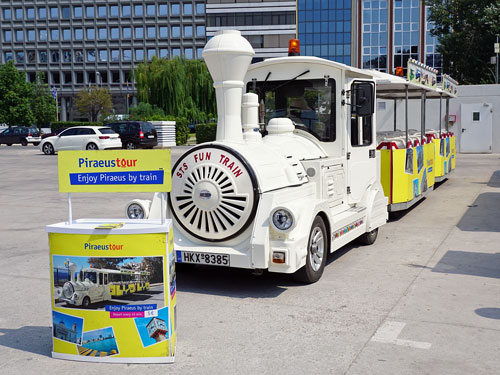|
|
|
| |
Metro - Trams - Trolleybuses - Buses - Funicular
All images link to larger
copies which will open in a new window/tab
This page is under construction!
|
|
|
This page shows images and postcards of transport in
Athens and Piraeus in Greece.
The adjacent cities of Athens and Piraeus run an interesting
joint system with metro, trams, trolleybuses and motor buses.
There is also a funicular and of course many ferries which will
be covered on separate pages.
Ref: wiki
|
|
|
|
|
|
Metro - Trams - Trolleybuses - Buses - Funicular
All images link to larger
copies which will open in a new window/tab
The Athens Metro (Greek: Μετρό Αθήνας, Metró Athínas)
is a rapid-transit system in Greece which serves the Athens conurbation and
parts of East Attica. It incorporates the former Athens-Piraeus Electric
Railways (ISAP), which opened as a conventional steam railway in 1869, and
which was electrified in 1904 and is now part of Line 1. Beginning in 1991,
Attiko Metro constructed and extended Lines 2 and 3 and the Attiko Metro
Operations Company (AMEL) operated these lines from 2000 to 2011. The metro
network merged in 2011 when the Greek government created the Urban Rail
Transport Company (STASY), a subsidiary of the Athens Urban Transport
Organization (OASA).
Until 28 January 2000, Line 1 was the only rapid-transit line in Athens and
Piraeus. The Athens and Piraeus Railway Company (SAP) opened the line on 27
February 1869 as a steam railway between Piraeus and Thiseio. It was
electrified in 1904, and extended in stages to Kifisia in 1957.
From 1976 to 16 June 2011, the Athens-Piraeus Electric Railway Company
(ISAP) operated Line 1 independently from the rest of the metro and tram
networks. Unlike Lines 2 and 3, it runs almost entirely above ground.
As the Metro has expanded, numerous archaeology have been uncovered. Some of
the articles found are displayed in the stations, particularly Syntagna.
Photography and video-taking is permitted across the whole Athens Metro
network, however very often the security personnel might create problems for
photographers, as I found out a number of times. Ref:
Wikipedia
Athens Metro Map
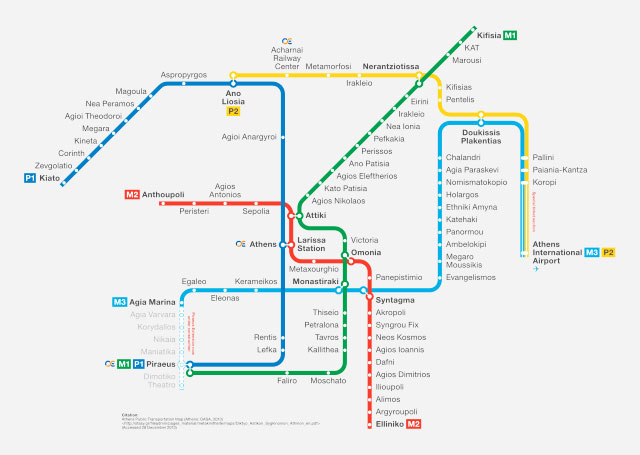
Athens Metro - Syntagma Station
with archaeological items displayed
Photo: ©Ian Boyle 13th September 2016
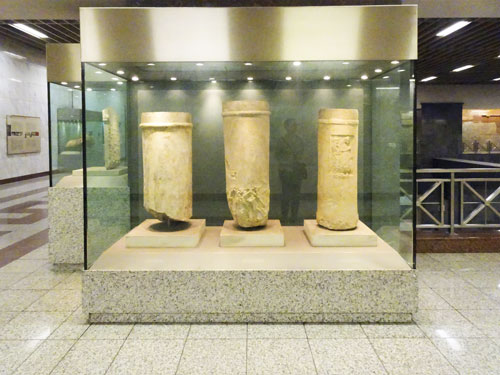
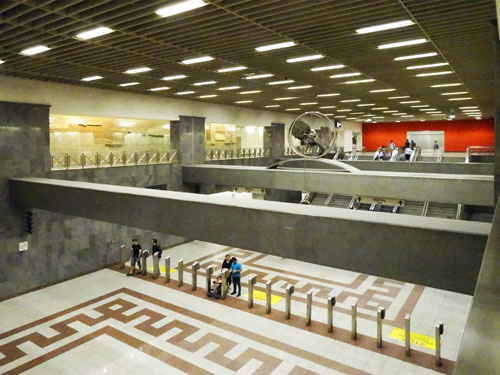
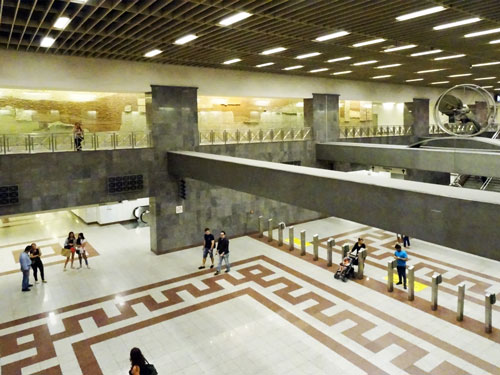
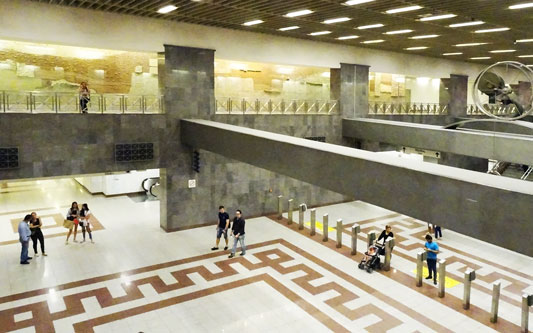
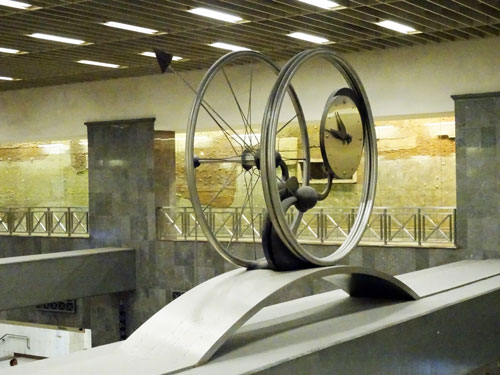
 Athens Metro - Monastiraki
Station
Athens Metro - Monastiraki
Station
Photo: ©Ian Boyle 13th September 2016
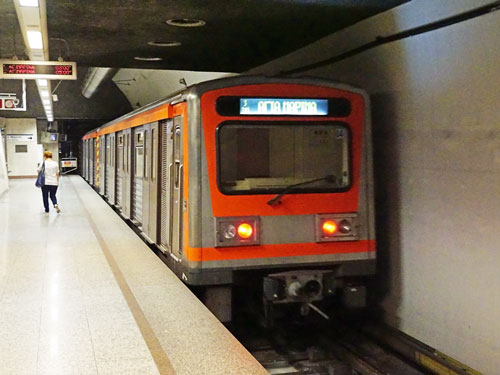
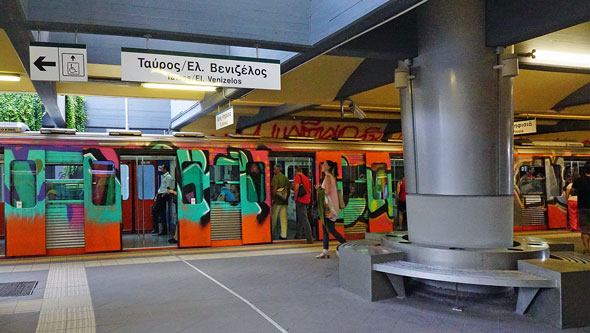
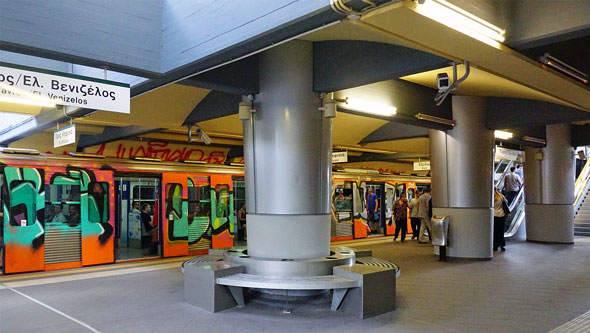 Athens Metro - Thiseio Station
Athens Metro - Thiseio Station
Photo: ©Ian Boyle 13-15th September 2016
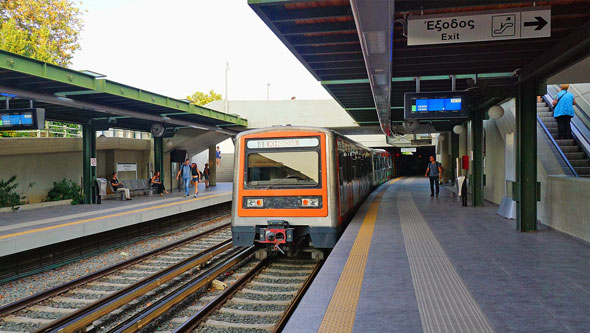
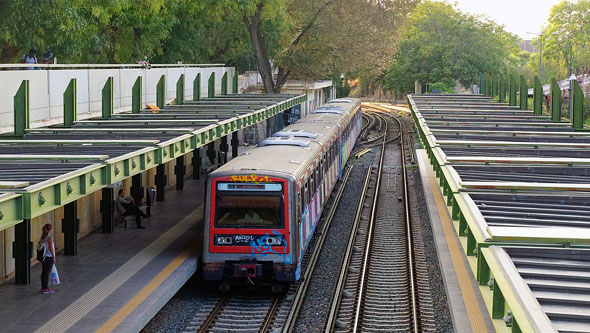
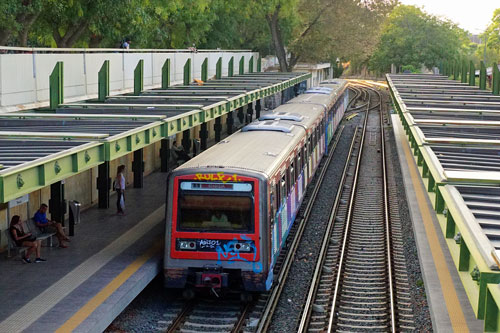
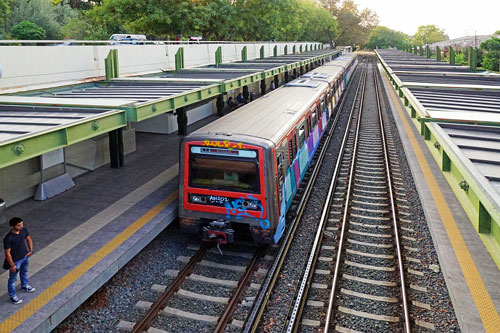
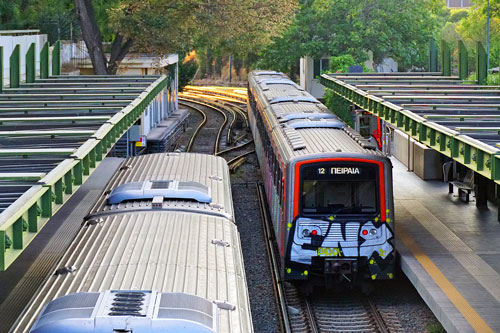
 Athens Metro - Faliro Station
Athens Metro - Faliro Station
Photo: ©Ian Boyle 13-15th September 2016
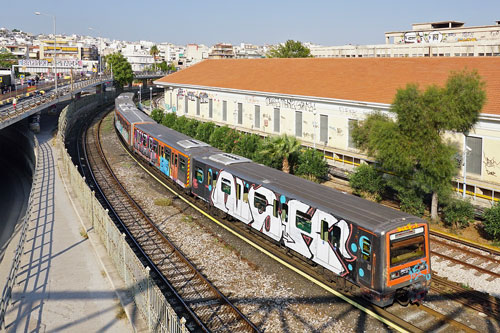
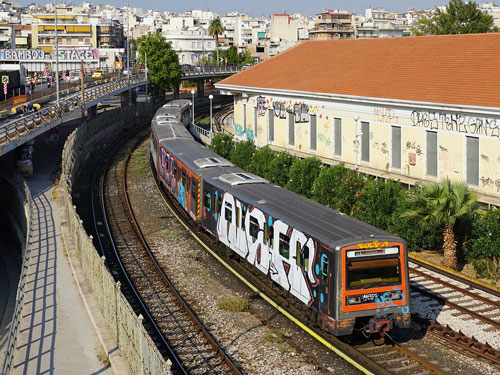
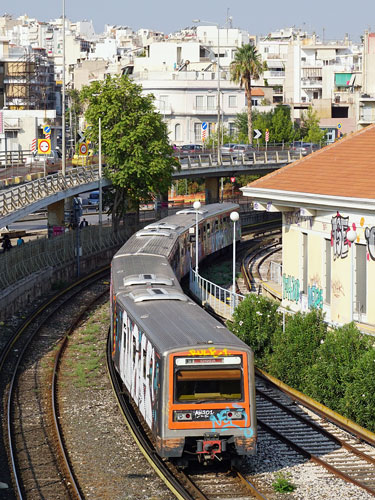
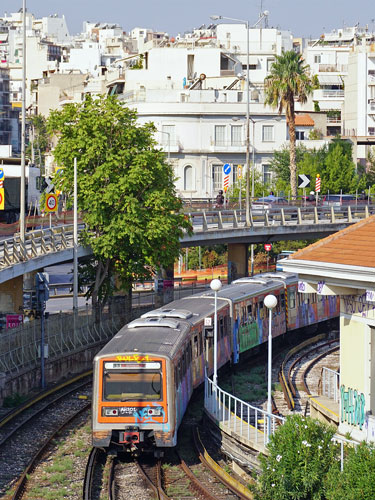
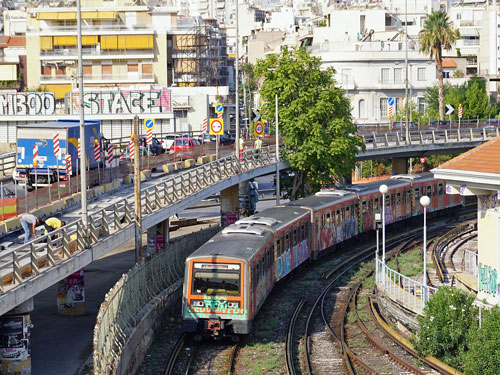
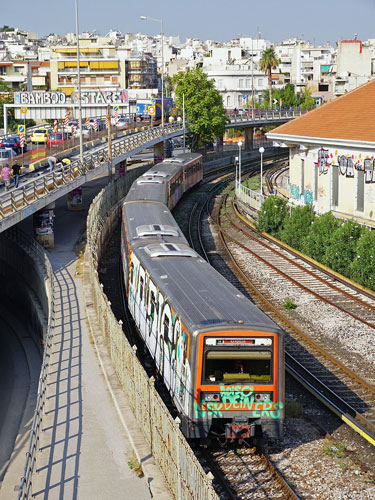 Athens Metro - the attractive
Piraeus Station
Athens Metro - the attractive
Piraeus Station
Photo: ©Ian Boyle 13-15th September 2016
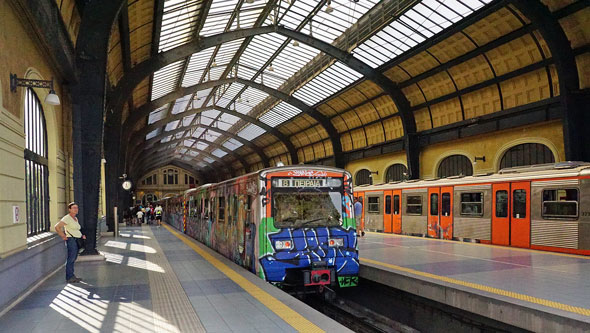
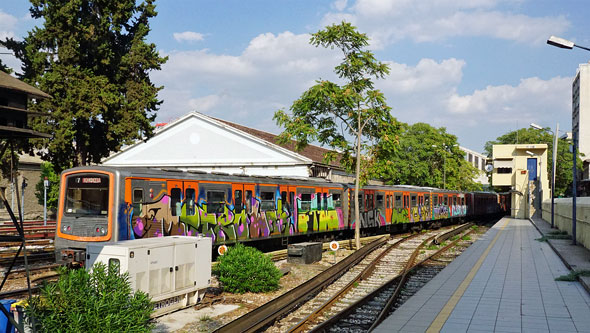
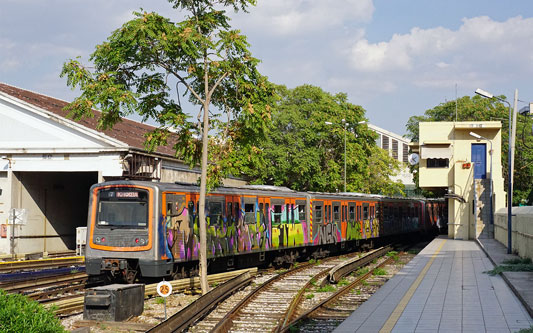
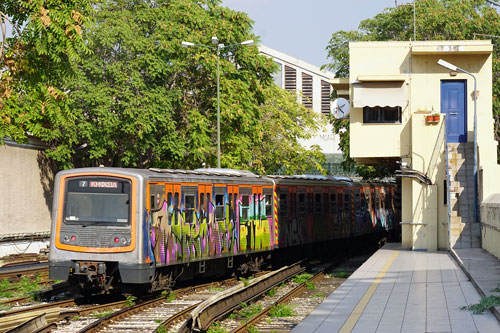
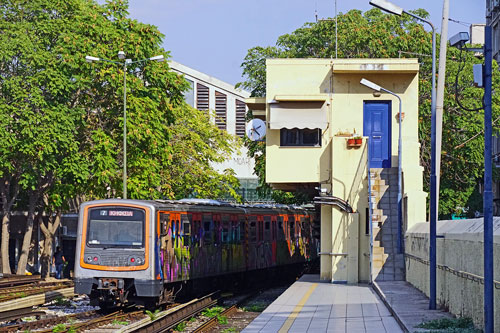
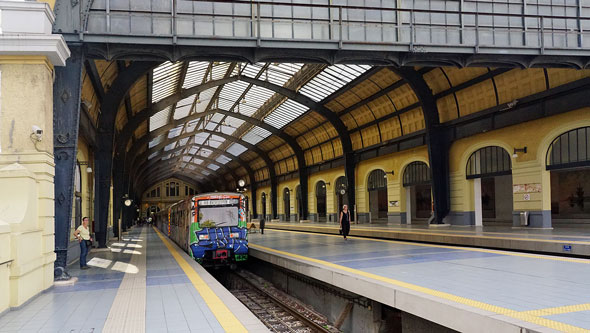

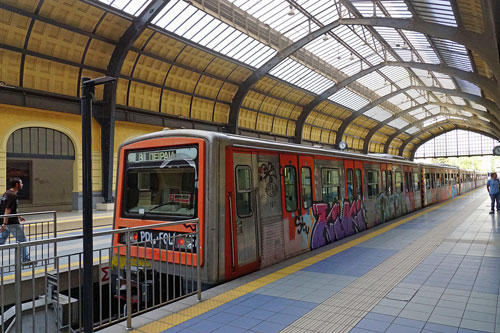
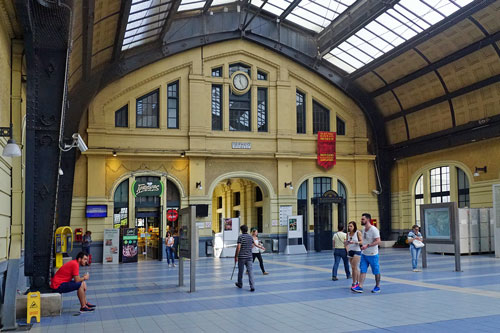
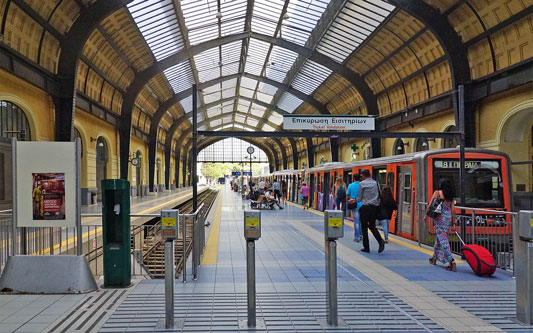
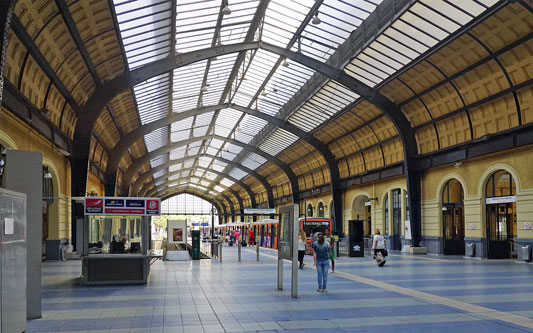

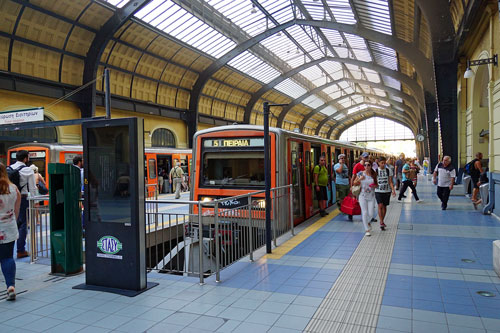
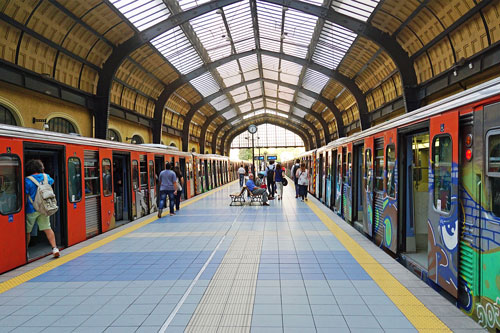
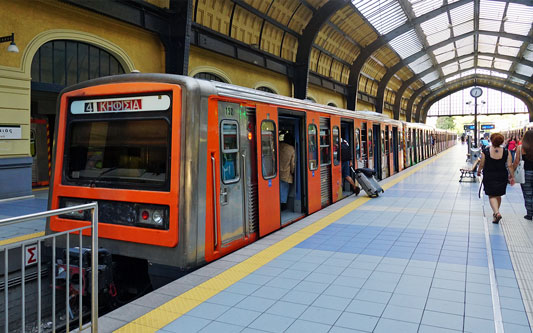
Athens built a new tramway for the 2004 Olympics.
Athens Tram SA operates a fleet of 35 vehicles, called 'Sirios', which serve
48 stations, employ 345 people with an average daily occupancy of 65,000
passengers. The tram network spans a total length of 27 km (17 miles) and
covers ten Athenian suburbs. The network runs from Syntagma Square to the
southwestern suburb of Palaio Faliro, where the line splits in two branches;
the first runs along the Athens coastline toward the southern suburb of
Voula, while the other heads toward the Piraeus district of Neo Faliro. The
coastal sections from Piraeus Faliro to Asklipelio run along the coast
similar to the Blackpool system. The network covers the majority of the
Saronic coastline. Further extensions are planned towards the major
commercial port of Piraeus. An expansion to Piraeus will include 12 new
stations, increase the overall length of tram route by 5.4 km (3 miles), and
increase the overall transportation network.
Similar Italian AnsaldoBreda 'Sirio' trams, 'designed by Pininfarina', are
used in Florence, Naples, Samsun (Turkey), Kayseri (Turkey), Sassari and
Zhuhai (China)
Tram TA10029
TA10029 at Syntagma terminus
adjacent to the Parliament Building
Photo: ©Ian Boyle 14th September 2016
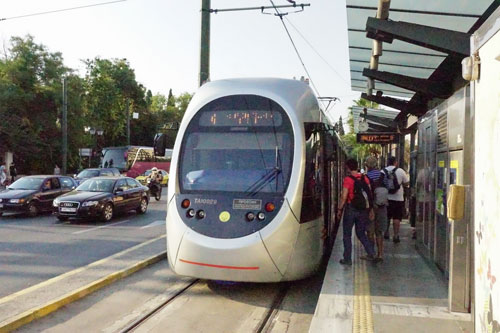
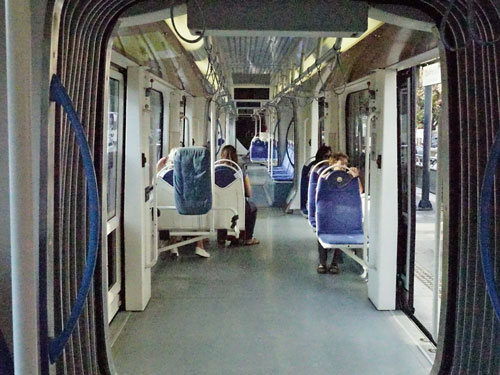
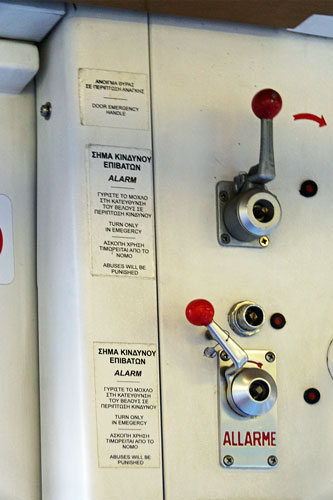 Tram TA10032
TA10032 at the current northern
terminus of Piraeus-Faliro
Tram TA10032
TA10032 at the current northern
terminus of Piraeus-Faliro
Photo: ©Ian Boyle 14th September 2016
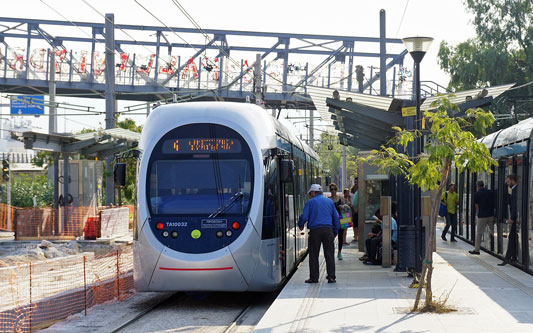 Tram TA10035
TA10035 at the current northern
terminus of Piraeus-Faliro
Tram TA10035
TA10035 at the current northern
terminus of Piraeus-Faliro
Photo: ©Ian Boyle 14th September 2016
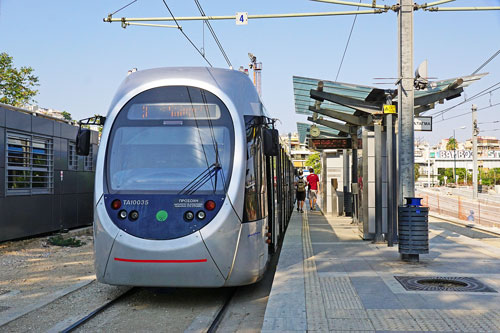
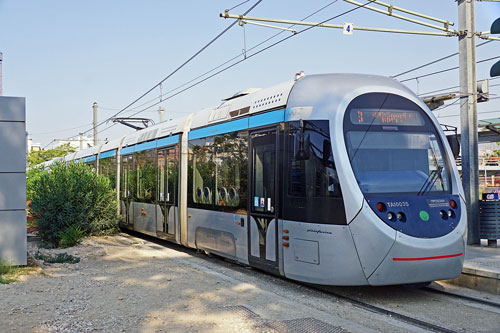
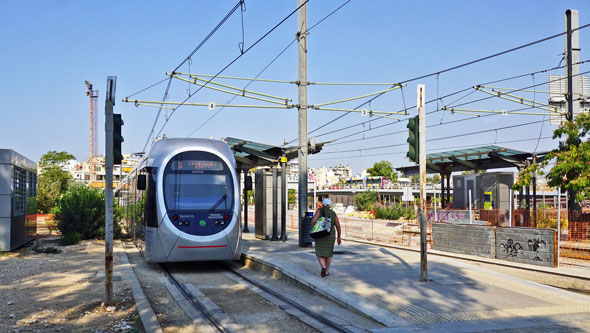
 More tram images will added
More tram images will added
Athens Trolleybuses - OASA
The Athens Urban Area is served by a large network of
motor buses and electric trolleybuses. The network is operated by Electric
Buses of the Athens and Piraeus Region, or ILPAP (Greek: ΗΛΠΑΠ) and consists
of 22 lines with an operating staff of 1,137. All of the 366 trolleybuses
are equipped to enable them to run on diesel in case of power failure.
Trolleybus 6049
6049 at Piraeus
Photo: ©Ian Boyle 13th September 2016
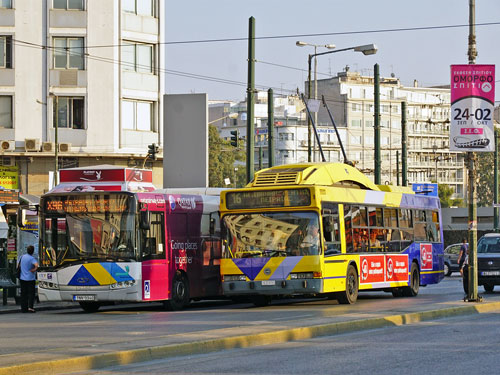
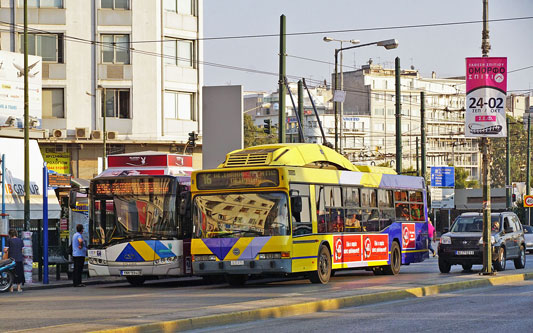
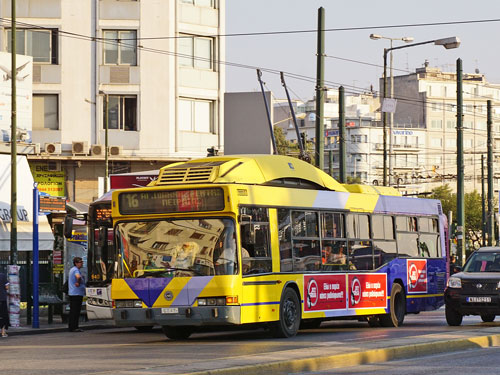 Trolleybus 6057
6057 at Piraeus
Trolleybus 6057
6057 at Piraeus
Photo: ©Ian Boyle 13th September 2016
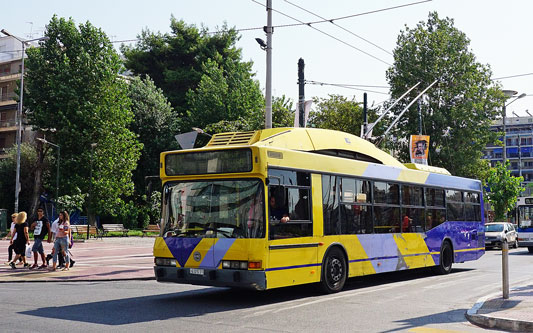 Trolleybus 6060
6060 at Piraeus
Trolleybus 6060
6060 at Piraeus
Photo: ©Ian Boyle 13th September 2016
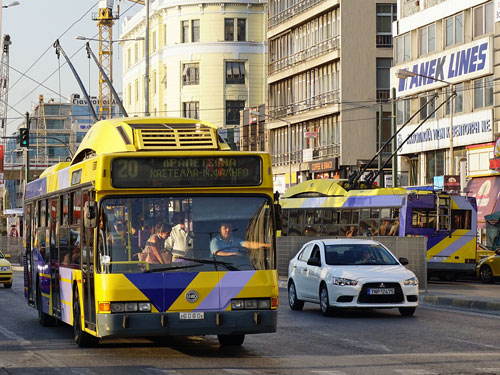
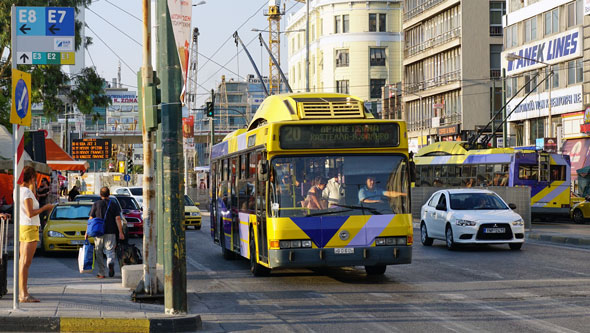
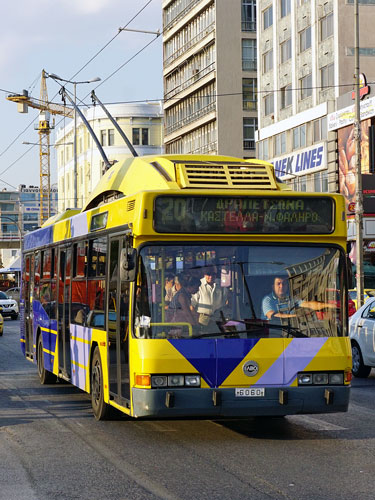
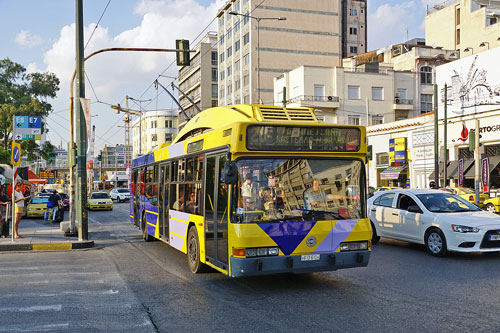
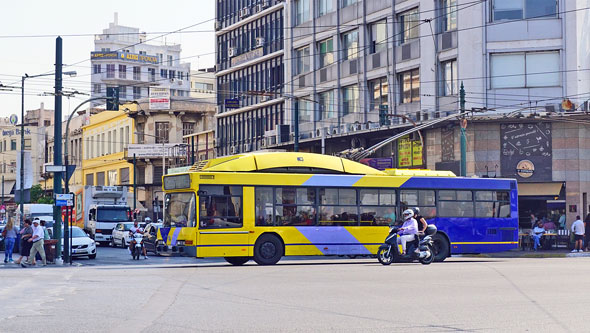 Trolleybus 6083
6083 at Piraeus
Trolleybus 6083
6083 at Piraeus
Photo: ©Ian Boyle 13th September 2016
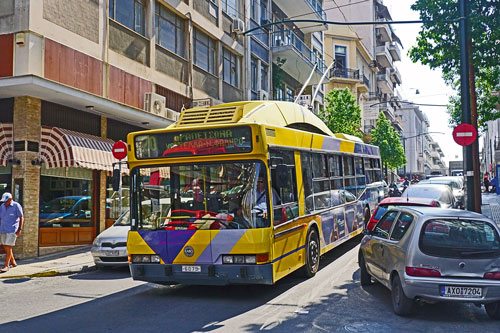 Trolleybus 6083
6083 at Piraeus
Trolleybus 6083
6083 at Piraeus
Photo: ©Ian Boyle 13th September 2016
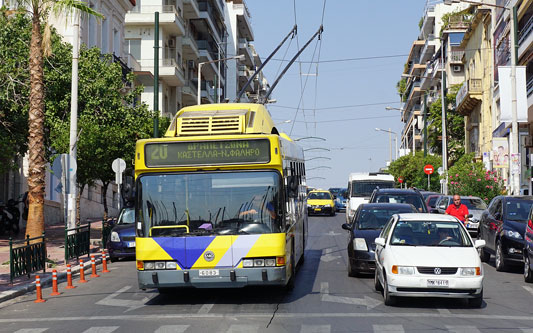
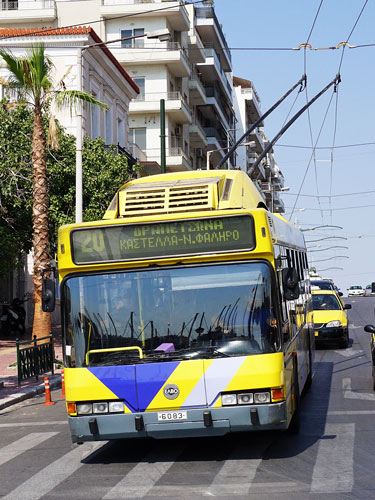
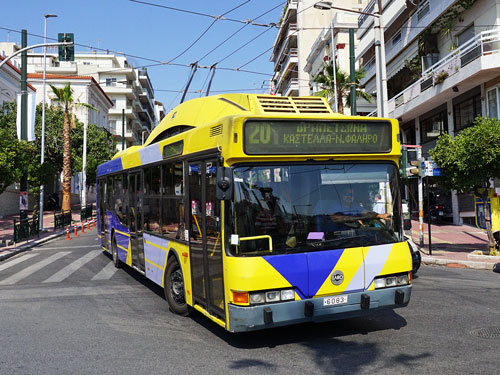
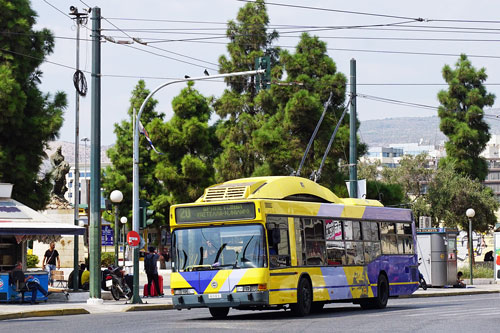
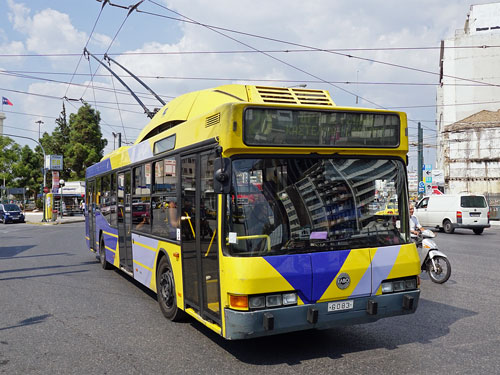
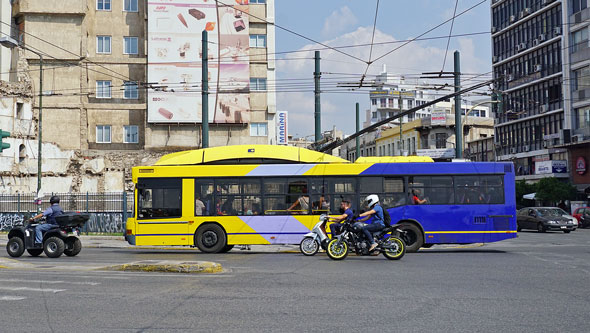 More trolleybuses will added
More trolleybuses will added
Lycabettus Funicular - Athens
The Lycabettus Funicular is a funicular railway to
the top of Mount Lycabettus in the Greek capital city of Athens. It was
constructed in the 1960s by the Greek Tourist Organisation (EOT) and was
inaugurated on April 18, 1965. The terminal stations are situated at
Aristippou street, in Kolonaki, and the Chapel of St. George, near the top
of the hill. Between the terminal stations, the line is entirely in tunnel.
In 2002 extensive refurbishment was carried out,
involving replacement of the motor, of the hydraulic brake unit, of the
electronics safety systems, of the control room and of the two cars of the
funicular. The railway now runs daily services, with a capacity of about 400
persons per hour. There is a bizarre light show plus adverts as the cars
ascend in the tunnel. There is also quite a steep climb mainly steps
just to get to the lower station. Ref:
Wikipedia
Number of cars 2
Number of stops 2
Configuration Single track with passing loop
Track length 210 metres (689 ft)
Maximum gradient 28°
Speed 7 kilometres per hour (4.3 mph)
Journey time 10 mins
Capacity 34 passengers per car
Athens - Lycabettus Funicular -
Ascent
Photo: ©Ian Boyle 13th September 2016
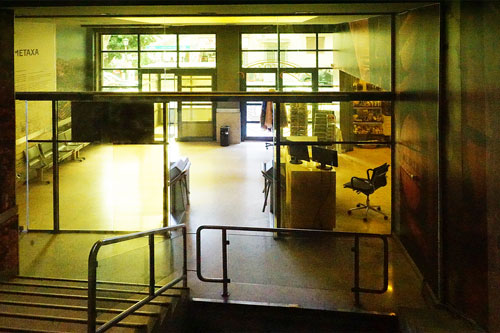
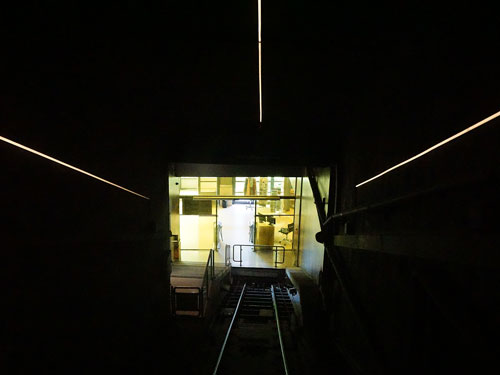

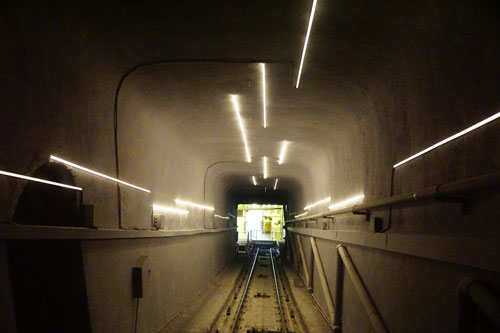
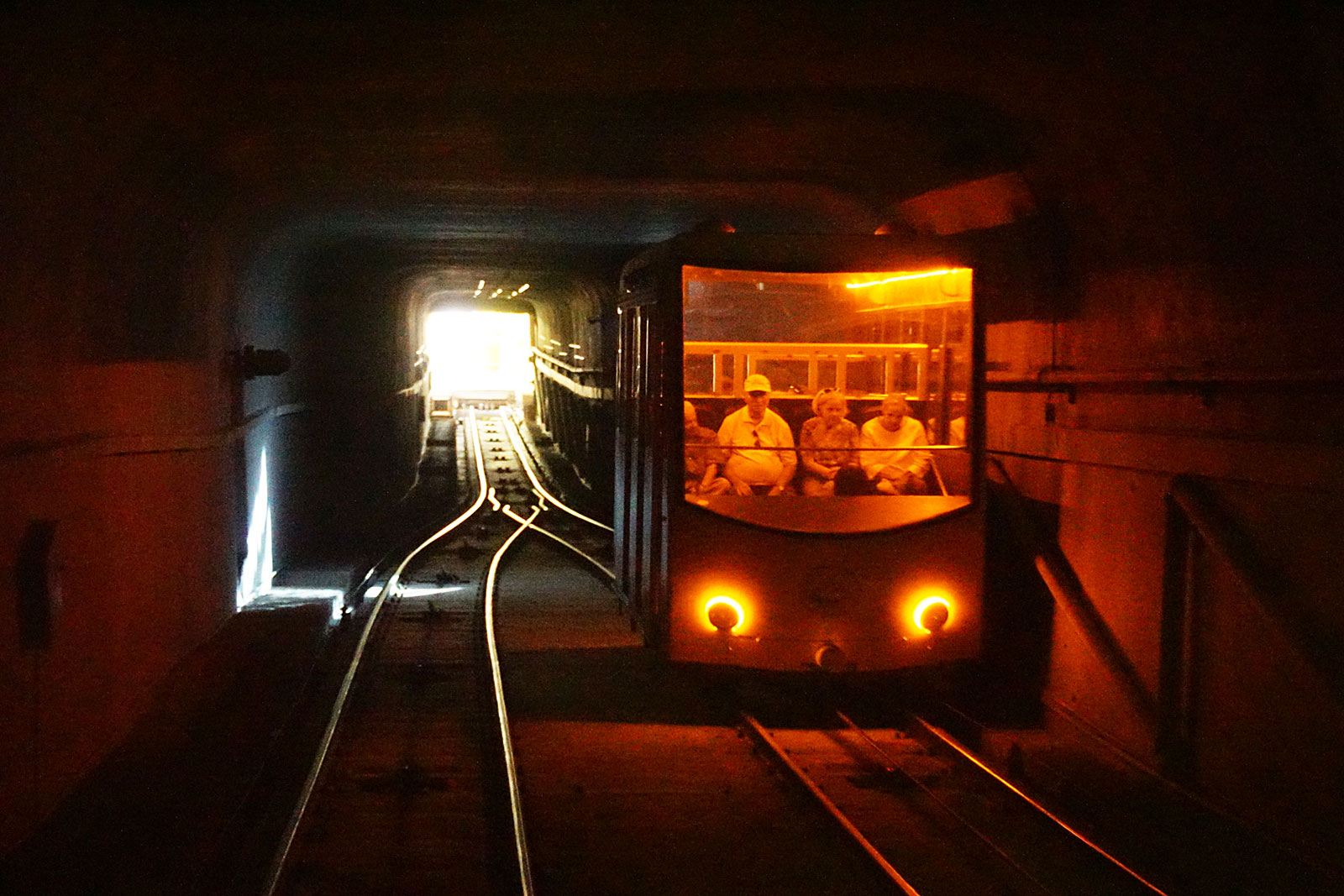
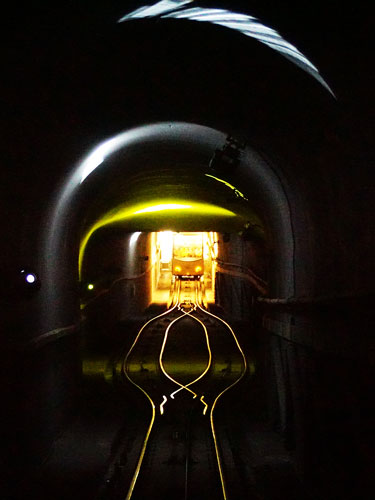
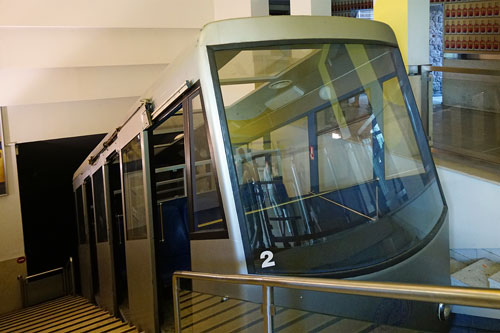
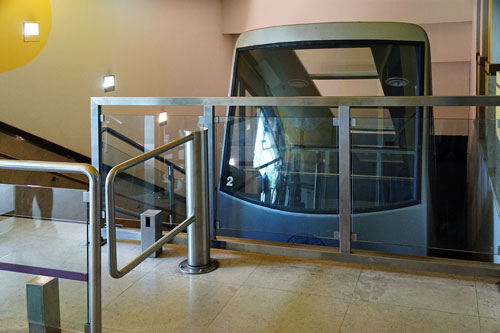 Athens - Lycabettus Funicular -
Summit with St George's Chapel and looking down on the Acropolis and
Parliament
Athens - Lycabettus Funicular -
Summit with St George's Chapel and looking down on the Acropolis and
Parliament
Photo: ©Ian Boyle 13th September 2016

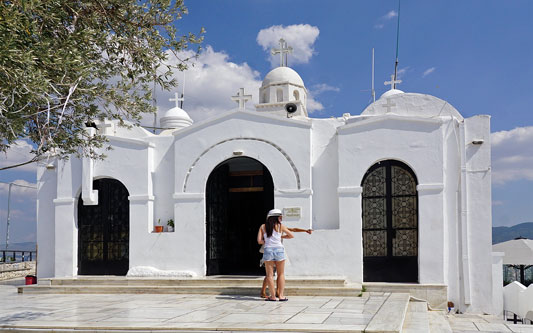
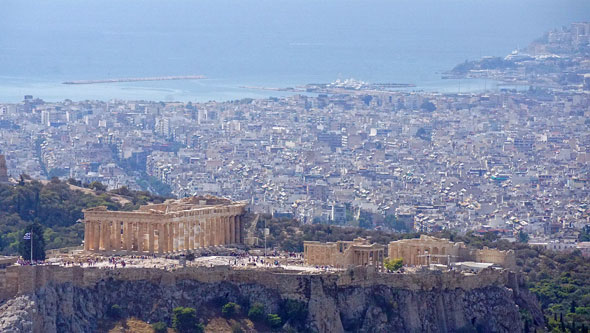
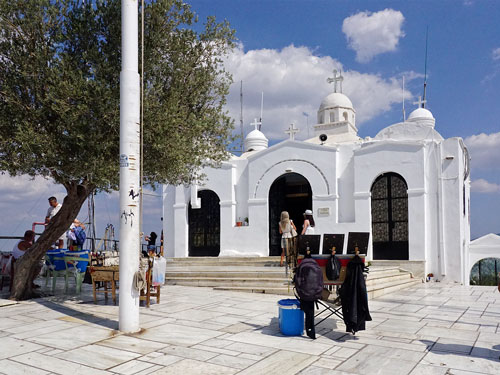
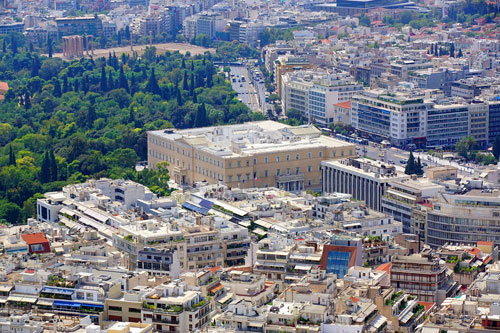 Athens - Lycabettus Funicular -
Descent
Athens - Lycabettus Funicular -
Descent
Photo: ©Ian Boyle 13th September 2016
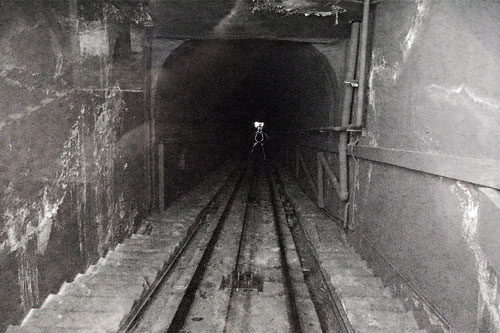
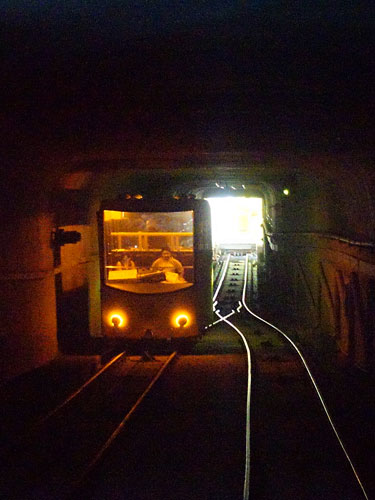
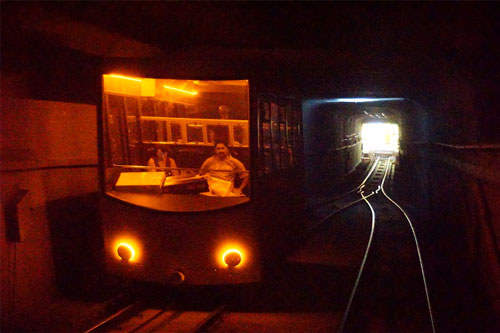
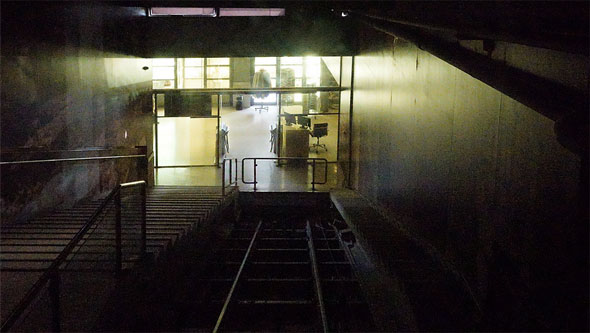
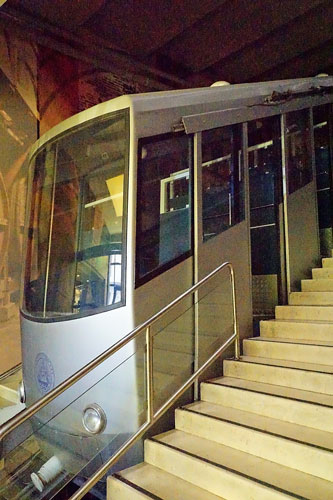
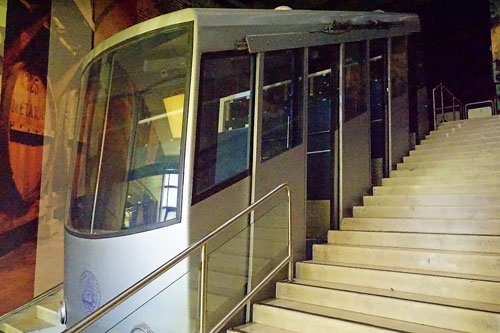
There are numerous different land trains ('Dottos')
working different routes around Athens, in particular starting from Syntagma
and the cruise terminal.
Athens - Land Trains at
Syntagma
Photo: ©Ian Boyle 13-15th September 2016


